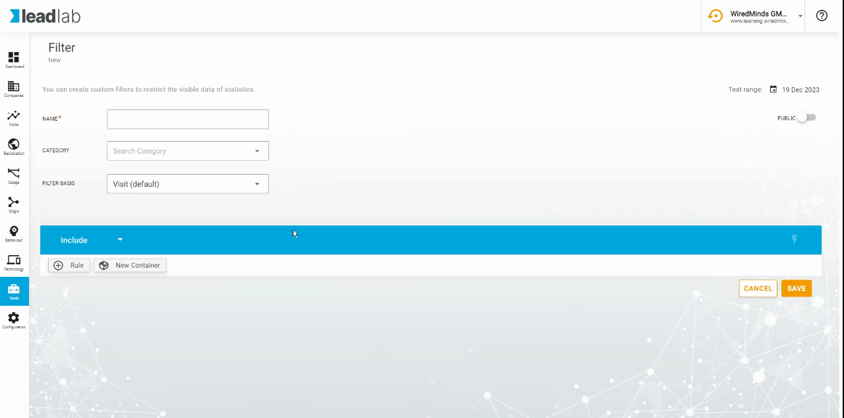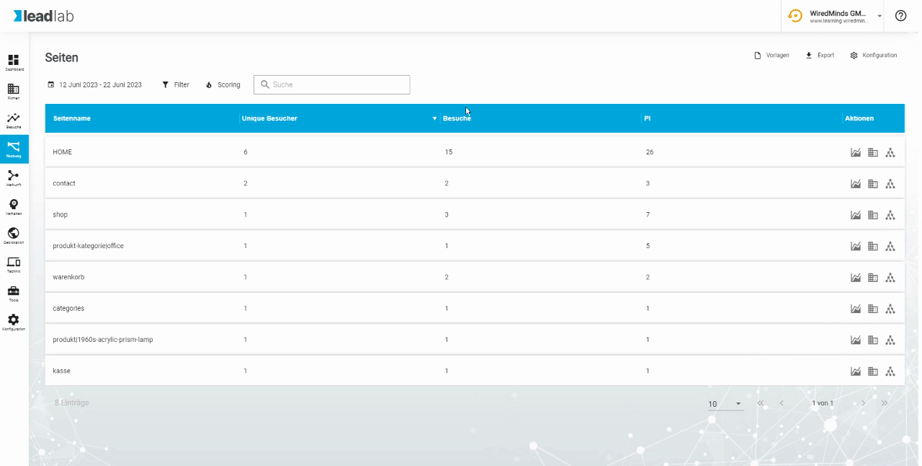By selecting the filter base, you can determine whether a filter should filter according to a company, a visit or an individual value.
When does it make sense to change the filter base?
A filter works by default based on visits. This means that all actions of a visit are displayed after the filter has been applied. Changing the filter base is useful if you want to extend the effect of a filter to a company or limit it to a single measured value such as a single page.
How can I change the filter base of a filter?
You can change the filter base within the filter settings by clicking on the lower icon for the filter base and selecting the desired base.
Examples
Visit-based vs. company-based in the company overview
Beispiel: Filter | Ausschließen | Seite = Warenkorb
With a visit-based filter, all visits are excluded; with the company-based filter, all companies that have accessed the “Contact form” page are excluded.
Visit-based vs. click-based in the usage analysis
Beispiel: Filter | Einschließen | Seite = Warenkorb
With a visit-based filter, the usage analysis shows all pages that were accessed during visits with the “Contact form” page in the visit history. A click-based filter only outputs the values of the filtered page “Contact form” and ignores the remaining pages from the visits.



